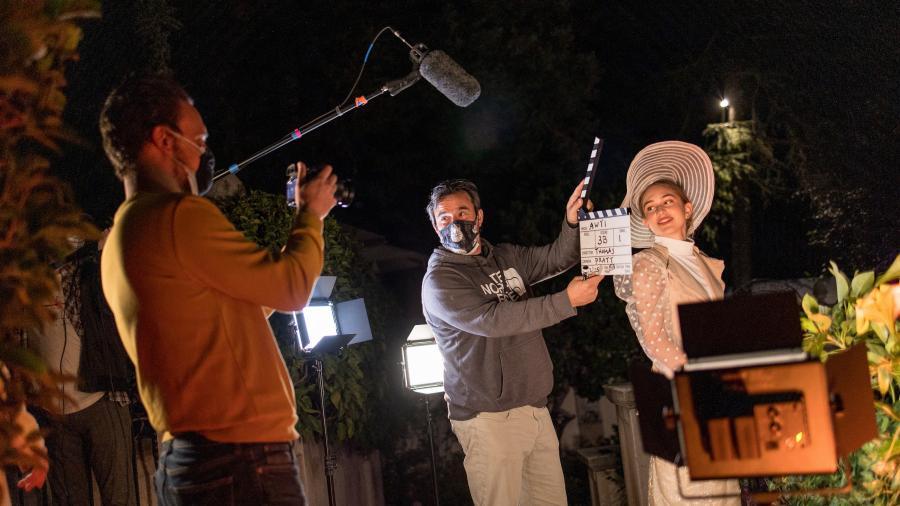Westmont Magazine The Play Within the Play

Performing Shakespeare During a Pandemic
In “A Winter’s Tale,” William Shakespeare weaves themes of jealousy and betrayal, time and forgiveness, dreams and the divine, and forgiveness and fairy tales. The play moves back and forth between the tragic and the comic and features some of Shakespeare’s best speeches.
The Theater Arts Department has interpreted and reimagined the story, creating “A Winter’s Tale (interrupted).” They’ve joined with Westmont’s new film studies program to produce a film about a college theater department attempting to stage the play in a pandemic. The action cuts quickly between actual rehearsal footage and their dream production mixed with homemade video logs of the actors’ lives during the past year. Theater professor Mitchell Thomas, stage director and producer, oversees a production that’s equal parts theater performance, documentary, video log and art film. Sean Pratt, who teaches film studies, directs and edits the film. Westmont students play all the parts and do all the filming.
“Our approach going into our 2020-2021 season was to seize the current situation as an opportunity for discovery, making work that is built for the current moment,” Thomas says. “We’re experiencing a once-in-a-lifetime era, and we aim for our work this season to reflect that powerful reality. We didn’t want our productions to be shadow versions of what we normally do but to actually re-imagine our conception, process and approach. ‘A Winter’s Tale (interrupted)’ explores what it means to be an artist and a human in the winter of 2020 in America.”
The cast and crew followed strict, professional-level safety protocols throughout filming. “The actors and the crew have risen to the occasion to create a meaningful work of art,” Thomas says. “We hope the audience remembers that the great story continues, even in moments when we can’t know or see the ending. I hope this film feels honest to the pain of the here and now and also helps us to remember that redemption and hope are possible even in the darkest of days.”







